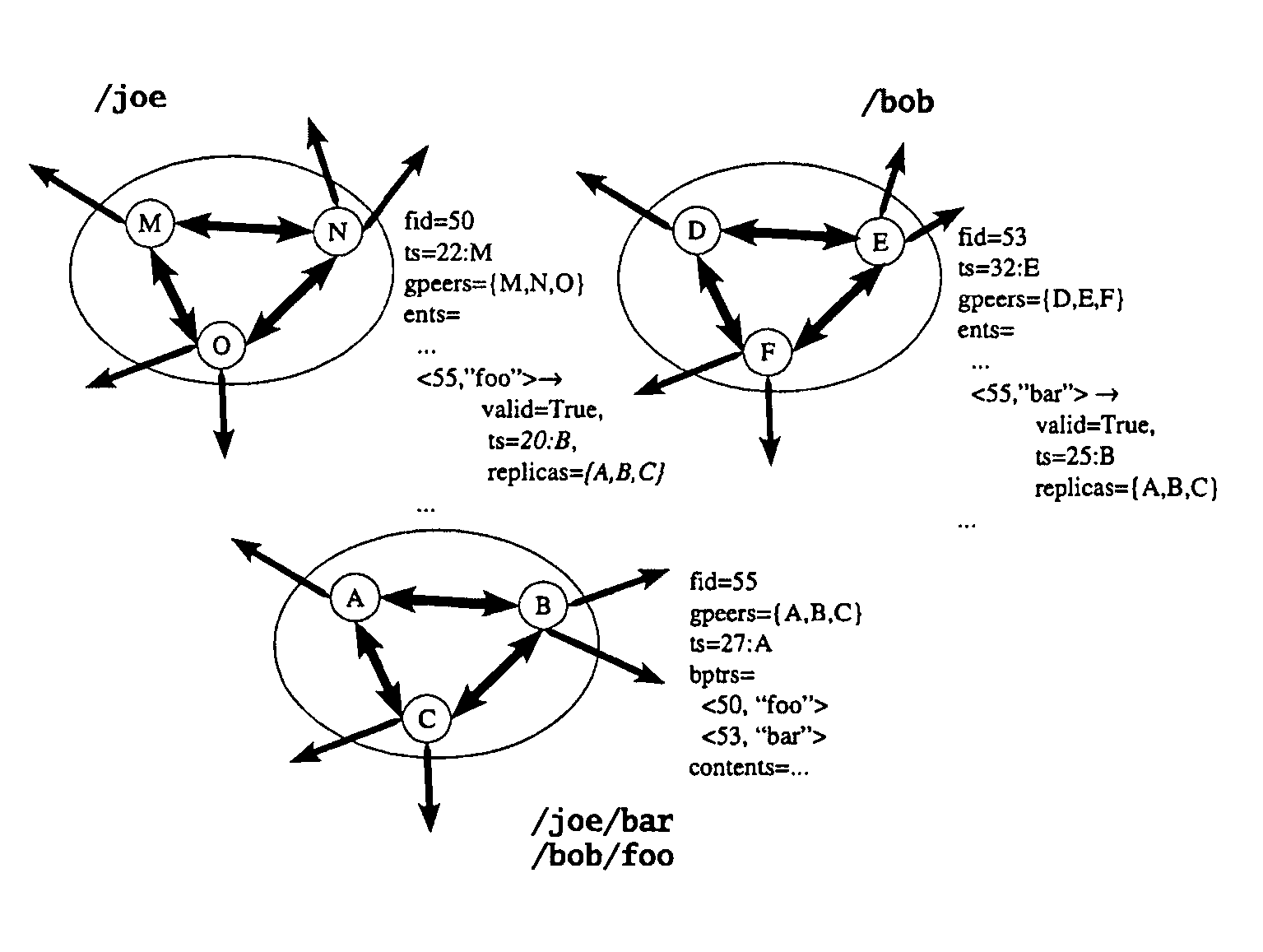Namespace consistency for a wide-area file system
a file system and namespace technology, applied in the field of distributed file systems, can solve the problems of limited file availability, user cannot access files that have not been used, and render nfs as very inefficien
- Summary
- Abstract
- Description
- Claims
- Application Information
AI Technical Summary
Benefits of technology
Problems solved by technology
Method used
Image
Examples
case 1
[0153] 11:B>11:A: The update for file fidfoo is sent from node B to A. Node A revives file fidfoo and schedules procedure ProcessUupdate to be called. This procedure will revive fidfoo's entry in directory fid / . The change to fid / is sent to node B, which accepts it, as shown in FIG. 31.
case 2
[0154] 11:A>11:B: Node B's update to fidfoo is sent to A, but is ignored. Node A's update to fidfoo is sent to B. Node B removes fidfoo and its entry in fid / . B sends its update to / back to A. In the end, the file is removed from both nodes so that the states of the nodes appear as in FIG. 32.
5.3 Scenario: rmdir-Update Conflict
[0155]This section shows how Pangaea resolves Example 2. Initially, the replicas are consistent, as shown in FIG. 33. Then, Alice creates file / foo / bar, as shown in FIG. 34. Bob removes directory fidfoo, as shown in FIG. 35.
[0156]Consider two cases, depending on whose update times-stamp is larger.
[0157]Case 1: 11:B>11:A>10:B>10:A: Updates to fid / and fiddir are sent from node B to A. Node A deletes / dir but notices that file fidfoo has become an orphan and puts it in ULOG (FIG. 19). The states of the nodes then appear as in FIG. 36. Update to fiddir is sent from node A to B, but is ignored by B. Later, node A runs ProcessUupdate. A resurrects directory fiddir....
PUM
 Login to View More
Login to View More Abstract
Description
Claims
Application Information
 Login to View More
Login to View More - R&D
- Intellectual Property
- Life Sciences
- Materials
- Tech Scout
- Unparalleled Data Quality
- Higher Quality Content
- 60% Fewer Hallucinations
Browse by: Latest US Patents, China's latest patents, Technical Efficacy Thesaurus, Application Domain, Technology Topic, Popular Technical Reports.
© 2025 PatSnap. All rights reserved.Legal|Privacy policy|Modern Slavery Act Transparency Statement|Sitemap|About US| Contact US: help@patsnap.com



